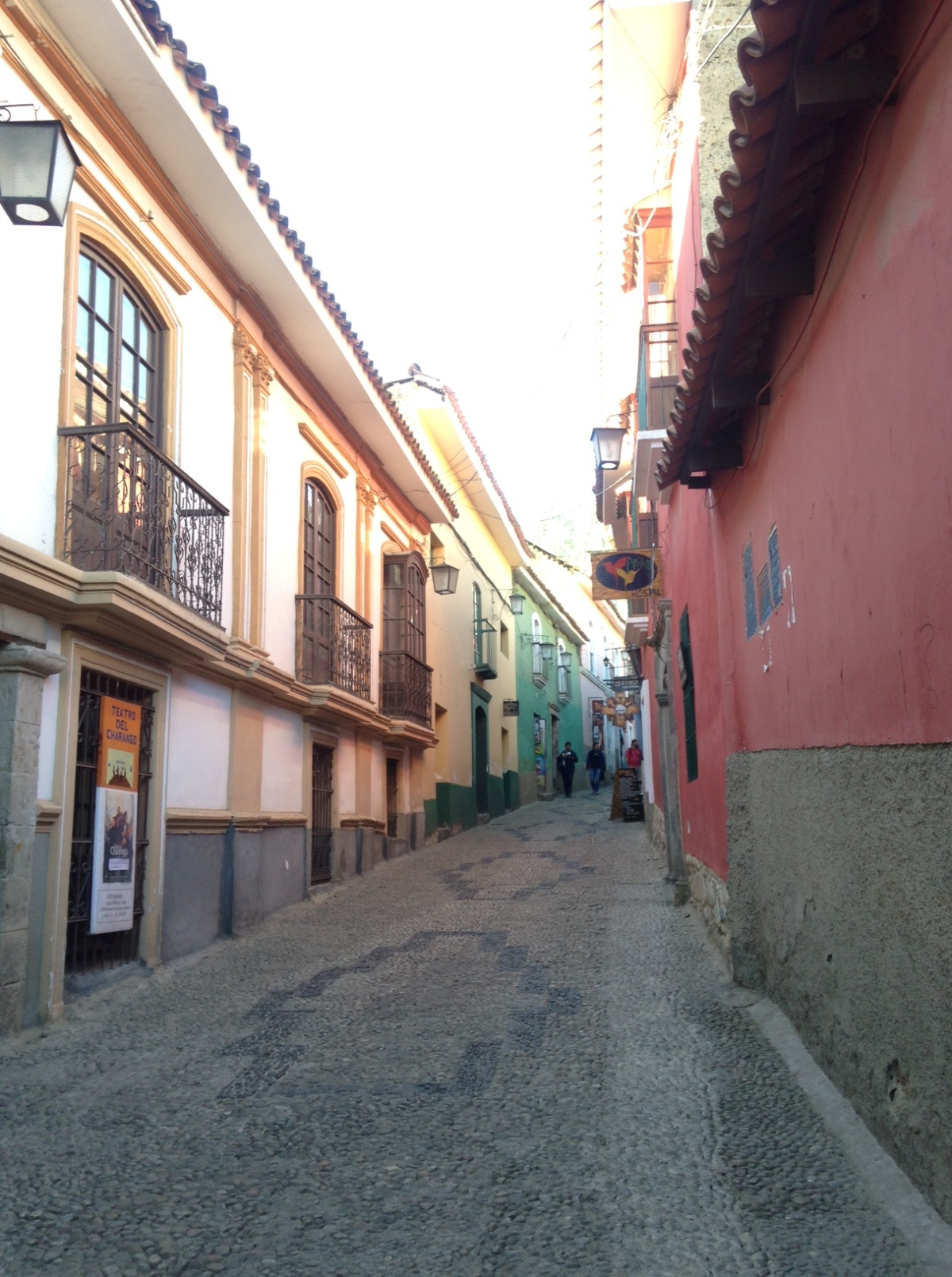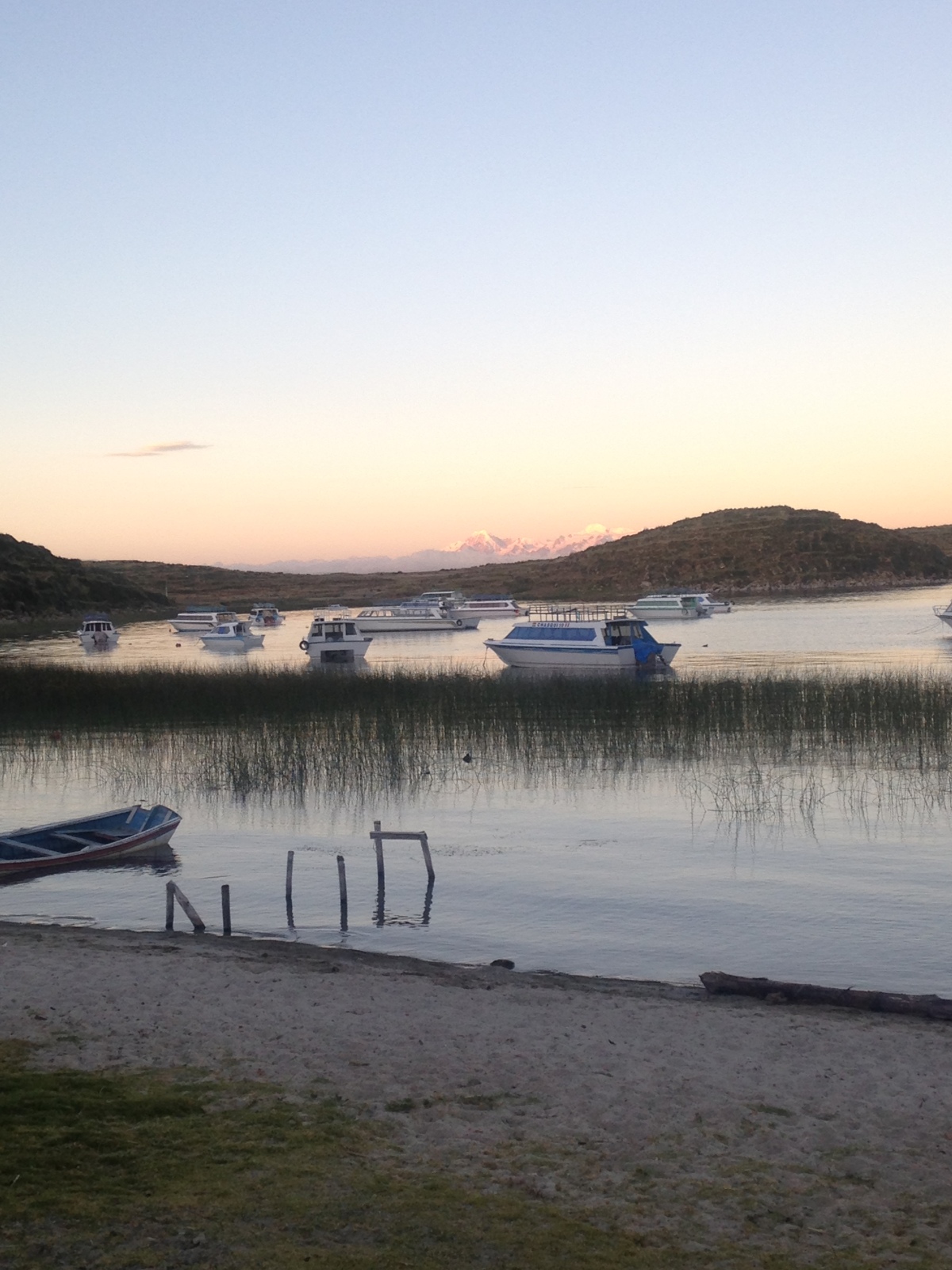At an altitude of around 3650m above sea level, La Paz is one of Bolivia’s most populous cities that is home of the central government. Is a city that seems to move quickly with people living their own fast paced lives, vendors crowding the thin streets and car and buses stuck in a never ending traffic. Yet, the location of this city surrounded by the altiplano, its people and buildings makes it a unique and incredible place from a touristic perspective.

After a 4-hour bus ride (including a 20-minute ferry ride) from Copacabana to La Paz, we arrived in the main terminal of the city. We grabbed a taxi and made it to our hostel late at night. Based on our good Cusco hostel experience, we decided to stay at Wild Rover La Paz. A twin room with a bunk bed started at 198 bolivianos or around 29 USD. The hostel is located close to some of top tourist attractions in La Paz.
We decided to start the next day with “Mi Teleferico”, an aerial cable car that can take you all the way up from La Paz to El Alto. There are 3 lines, Red, Yellow and Green. The yellow line was our choice and once you are at the top, you’ll see some of the most incredible views of the city.

Our next stop was at the crowded Plaza San Francisco. There are walking tours that leave from here every hour for only 20 bolivianos per person.
The walk started at the Witches Market, a place like I’ve never seen before. It’s a market around different streets where you can find traditional crafts, souvenirs, medical plants, ingredients and dried llama fetuses that are used for rituals. I must say that it was a bit shocking and disturbing to see the dried llama fetuses yet it’s a normal tradition for locals to perform rituals where they bury the llamas for good luck under new homes or business to the goddess Pachamama or “Mother Earth”.


The next stop was at Plaza Murillo. As we were approaching the plaza, we saw many police personnel with riot gears and barricades surrounding the plaza. Our group was able to get in because we were tourists. The protest was from disabled people demanding a monthly subsidy of 500 bolivianos from the government.
Arguably Bolivia’s most important plaza, its surrounded by the presidential palace “Palacio Quemado”, the Cathedral of La Paz and the national congress.

San Pedro prison was the next stop of the tour. A prison like no other, it’s known for having a society within the walls, where inmates can live with their families while they do their sentences. Although we did not go inside for obvious reasons, the prison is also known for having “wealthier” and “poorer” areas within the prison.
The final stop was at Apolinar Jaen street. The most beautiful street that we saw in La Paz, is narrow yet rich in colors and surrounded by shops and restaurants.

Although we did not have time to cover other important places like “Death Row” or the Moon Valley, we were able to have a good grasp of this unique city in 1 day.
Next Stop: Sucre.















